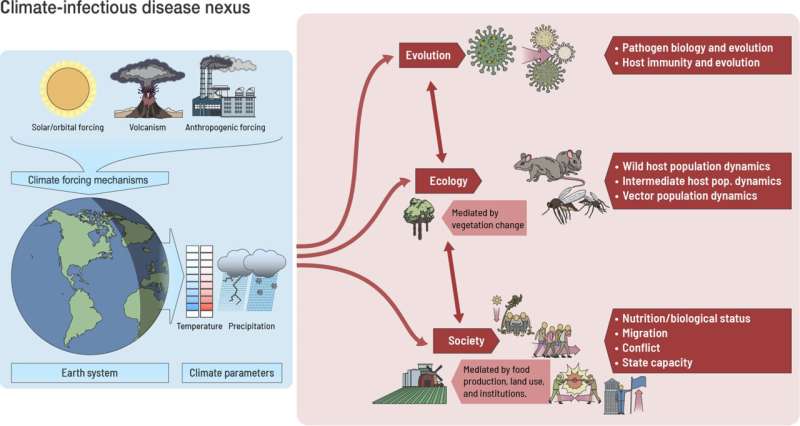January 29, 2024 report
This article has been reviewed according to Science X's editorial process and policies. Editors have highlighted the following attributes while ensuring the content's credibility:
fact-checked
peer-reviewed publication
trusted source
proofread
Link found between cold snaps during Roman Empire era and pandemics

A team of geoscientists, Earth scientists and environmental scientists affiliated with several institutions in Germany, the U.S. and the Netherlands has found a link between cold snaps and pandemics during the Roman Empire.
In their project, reported in the journal Science Advances, the group studied core samples taken from the seabed in the Gulf of Taranto and compared them with historical records.
Researchers learn about climatic conditions in the distant past by analyzing sediment built up from river deposits. Tiny organisms that are sensitive to temperature, for example, respond differently to warm temperatures than to cold temperatures and often wind up in such sediment. Thus, the study of organic remains in sediment layers can reveal details of temperatures over a period of time.
In this new effort, the researchers took advantage of such knowledge by collecting core samples from the Gulf of Taranto—the gulf that gives Italy the sole of its boot shape. Core samples from the site reveal details of the history of the area going back to the time of the Roman Empire.
Using the core samples, the research team was able to study the population density of dinoflagellates, tiny creatures that are more numerous when it is cold. By noting such density levels and dating them using other material in the same sediment layers, the team was able to pinpoint cold snaps during the period 200 B.C. to 600 A.D., which coincided with the latter years of the Roman Empire.
The research team created a timeline showing when cold snaps occurred and added known pandemics to the same timeline, finding that many of them overlapped.
The researchers suggest that cold snaps could have led to weakened immune systems due directly to the chill or because people in the area had less to eat when crops did not grow as well. It is also possible diseases could have spread more easily as people kept closer to one another to share their warmth.
More information: Karin A. F. Zonneveld et al, Climate change, society, and pandemic disease in Roman Italy between 200 BCE and 600 CE, Science Advances (2024). DOI: 10.1126/sciadv.adk1033
Journal information: Science Advances
© 2024 Science X Network




















